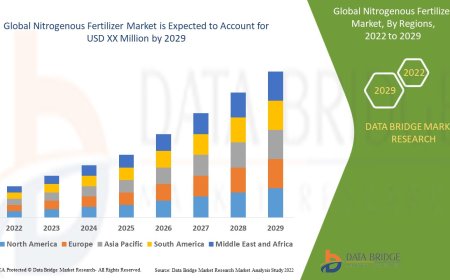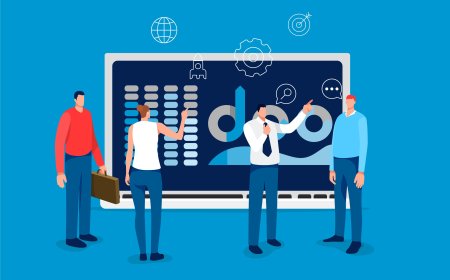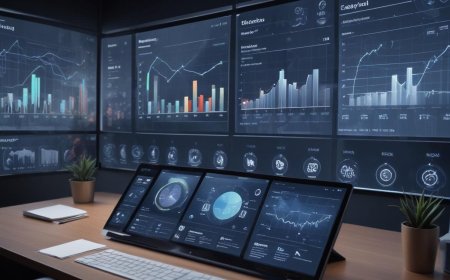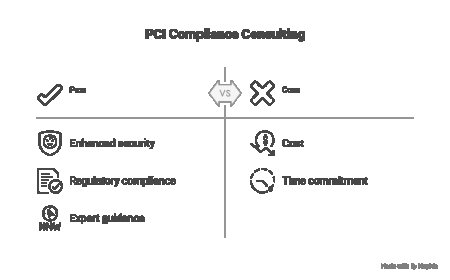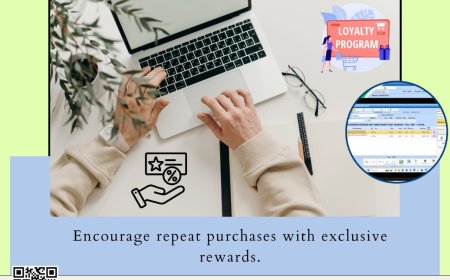How LMS for Higher Education Streamlines Teaching, Learning & Administration?
Discover how an LMS for Higher Education streamlines teaching, learning, and administration by centralizing courses, automating processes, and enhancing collaboration through LMS Mobile Apps and seamless Integration with LMS Systems.

In today's rapidly evolving education landscape, colleges and universities are constantly seeking ways to enhance the teaching and learning experience while optimizing administrative operations. The LMS Learning Management System has become a pivotal tool in achieving these goals. By providing a unified platform for content delivery, performance tracking, and communication, an LMS transforms the entire educational process.
While industries like LMS for Healthcare use learning platforms for compliance and skills training, higher education institutions leverage the LMS to streamline curriculum management, boost student engagement, and simplify administrative workflows. Lets explore how an LMS for Higher Education is reshaping teaching, learning, and administration.
1. Centralizing the Learning Experience
The LMS Learning Management System acts as a digital hub where all teaching and learning activities take place. Professors can upload lecture notes, videos, quizzes, and assignments in one centralized location. Students access these resources at their convenience, fostering a self-paced and organized learning experience.
Whether its delivering live lectures or enabling asynchronous learning, the LMS ensures that the entire educational journey is centralized, easy to navigate, and accessible from anywhere. With the growing demand for remote and hybrid learning, this flexibility has become essential for both students and faculty.
2. Facilitating Remote and Mobile Learning
Todays learners expect education to be accessible anytime, anywhere. An LMS Mobile App makes this possible by extending learning beyond the traditional classroom. Students can attend lectures, submit assignments, participate in discussions, and take quizzes from their smartphones or tablets.
For faculty members, the LMS Mobile App allows quick grading, announcements, and student performance tracking on the go. This mobile access ensures that learning never stops, whether on campus, at home, or while traveling.
The convenience of mobile learning boosts engagement, making students more likely to interact with course content regularly, improving retention and academic success.
3. Streamlining Administrative Processes
Beyond teaching and learning, an LMS for Higher Education plays a vital role in simplifying administrative tasks. Manual processes like attendance tracking, exam scheduling, and grade recording can be automated, saving countless hours for staff.
Integration with existing academic systems through Integration with LMS System ensures that student data, course schedules, and exam results seamlessly flow between platforms. This eliminates redundant data entry and reduces the risk of human error. As a result, administrators can focus more on strategic planning and student support rather than time-consuming paperwork.
4. Enhancing Student Engagement and Collaboration
An effective LMS Learning Management System fosters collaboration and communication among students and teachers. Discussion forums, group assignments, chat features, and virtual classrooms allow for meaningful interactions, promoting a sense of community within higher education institutions.
Teachers can create polls, surveys, and quizzes to gauge student understanding in real-time, adapting their teaching strategies accordingly. These interactive features encourage active learning, making lessons more engaging and effective.
With integrated communication tools, announcements, and event reminders, the LMS keeps students informed and connected, reducing the communication gaps that can hinder academic progress.
5. Providing Real-Time Analytics and Insights
Data-driven decision-making is critical in education. LMS platforms offer real-time analytics and reporting tools that provide valuable insights into student performance, engagement levels, and learning progress.
Instructors can identify students who may be struggling and offer timely interventions. Administrators can track overall academic performance, resource utilization, and course effectiveness, allowing them to make informed decisions that improve institutional outcomes.
These insights enable a more personalized learning experience, helping students achieve their academic goals while improving overall institutional performance.
6. Supporting Lifelong Learning and Professional Development
While primarily used in higher education, the versatility of LMS platforms extends to various fields, such as LMS for Healthcare, where ongoing professional development and compliance training are critical.
Similarly, higher education institutions can use the LMS to offer certification courses, professional development programs, and lifelong learning opportunities for alumni and working professionals. This not only enhances the institutions reputation but also creates new revenue streams.
7. Seamless Integration with Third-Party Tools
An LMS is most effective when it works harmoniously with other academic and administrative systems. Through Integration with LMS System, institutions can connect the LMS with:
-
Student Information Systems
-
Video conferencing tools like Zoom or Microsoft Teams
-
Digital libraries
-
Assessment platforms
-
Payment gateways for course fees
This seamless integration ensures that the LMS functions as a cohesive part of the institution's digital ecosystem, reducing technical barriers and improving the user experience for all stakeholders.
8. Ensuring Scalability and Future-Readiness
As higher education evolves, the LMS must scale to meet growing demands. Cloud-based LMS solutions offer scalability, automatic updates, and secure data storage, ensuring the platform remains reliable as student populations and course offerings expand.
Moreover, innovations like AI-driven learning paths, gamification, and adaptive assessments are increasingly being integrated into LMS platforms, preparing institutions for the future of education.
9. Streamlining Assessment and Certification
Assessment management becomes seamless with an LMS. Faculty can create online quizzes, automate grading, and provide instant feedback to students. This reduces the administrative burden and improves the assessment experience for both teachers and learners.
For students, automated grading and certifications provide immediate recognition of their achievements, motivating them to continue learning.
Final Thoughts
The LMS Learning Management System is no longer just a tool for delivering online coursesit has become an essential platform that streamlines teaching, learning, and administration in higher education. With features like the LMS Mobile App, Integration with LMS System, and applicability across industries like LMS for Healthcare, these systems are versatile, scalable, and future-ready.
By centralizing learning resources, automating administrative processes, and providing real-time insights, an LMS empowers institutions to create engaging, efficient, and modern learning environments. For higher education institutions looking to boost student success, improve operational efficiency, and stay competitive, adopting a robust LMS is a strategic imperative.













